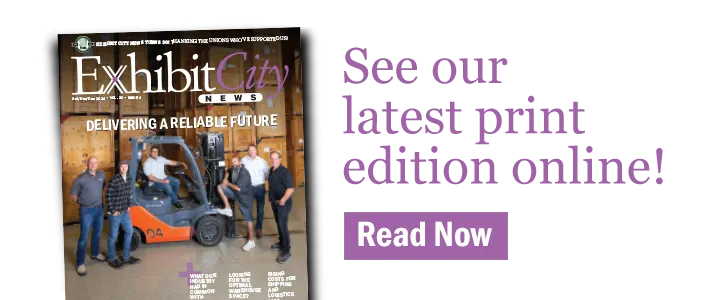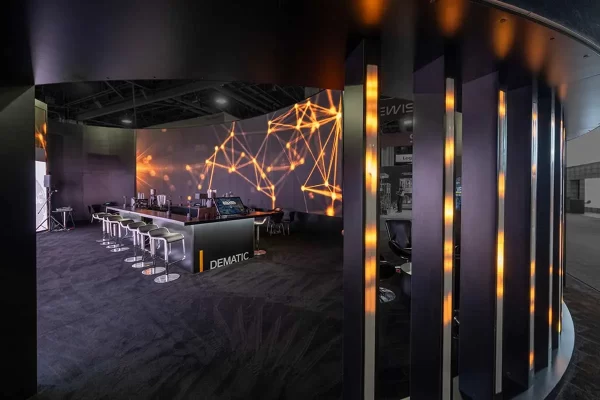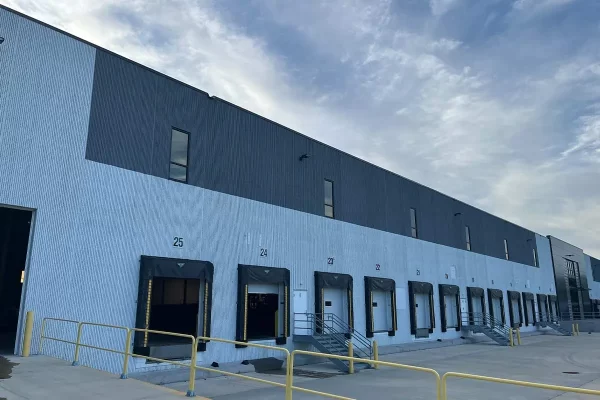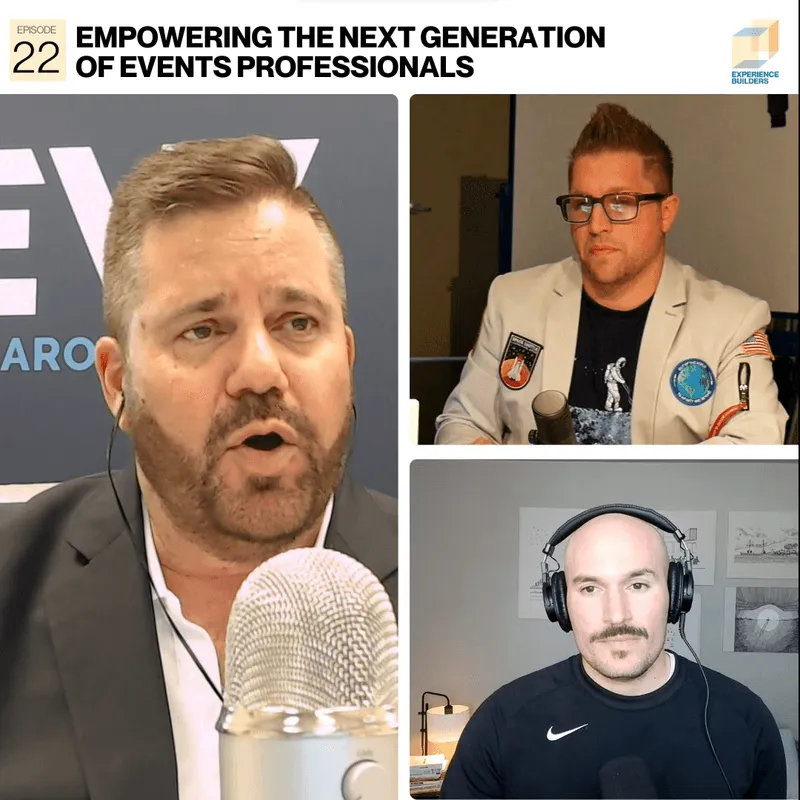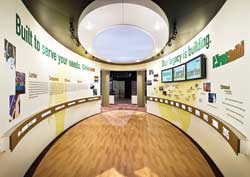
When exhibit managers sit down with an exhibit house designer to discuss options for a new exhibit or refurbishment of an existing property, they often discuss the appearance of the structure and the branding statement it makes: graphics, meeting rooms, presentation stations, theater set-up, storage capacity, traffic flow, height, width, etc. More often, it is the designer that brings up exhibit flooring and how to incorporate this fundamental component into the overall exhibit design. Few exhibitors think of flooring as a focal point within an exhibit, an accent, an underutilized opportunity to extend an organizations brand.
Years ago, the predominant exhibit flooring was carpeting. The only flooring decisions that had to be made were color and padding depth. Today, exhibit designers have a cornucopia of flooring options, including FlexFloor, interlocking, digital carpet, raised, green, vinyl, hardwoods, laminates, vinyl and more. Carpet has also evolved with today’s options including custom printed carpet, bold stripes, jazzy prints and floral patterns, but don’t forget the old standby colors of phosphorescent fuchsia, lipstick red, gunmetal gray and panther black.
With this in mind, Exhibit City News asked three exhibit designers what floorings they like to incorporate into their designs and what flooring types are popular today.
What are your favorite flooring types and why?
Munis Oomatia, senior exhibit designer for MG Design Associates: The best choice for flooring depends on what type of exhibit you are designing. If the exhibit premiers at a food show, you need a flooring solution that is durable and easy to clean. If the exhibit is for gym equipment shows, you need resilient flooring for the heavy equipment and traffic that resembles permanent environment flooring solutions. If it is a multi-show program, we try to find flooring that can be reused. If it is a one-time use that will be disposed of, a floor’s sustainability factor is very important in our selection.
I like to incorporate raised floors into designs because you can add lighting elements and hide cabling in the flooring. The raised floor hides base plates that help to support and anchor high freestanding structures. However, this option can be more expensive than others when it requires more drayage or setup time. In the United States, the ADA requirements can add challenges to an exhibit design with a raised floor.
Ted Rivers, creative director at Pinnacle Exhibits: The flooring choice should always map to your client’s brand image – budget permitting.FLOR carpet tiles are an interesting choice for flooring.There is a little more labor involved to install it on site, but the colors and patterns are well worth it. Having the opportunity to use laminate flooring or using vinyl flooring is always welcome to call out highlighted areas. Laminate flooring may have a tendency to scratch, but in a tradeshow application where it is only used for afew days, it holds up pretty well. There’s a nice tactile feeling to hearing your shoes make contact with a hard surface.
Also, if the show hall has it, having the rare opportunity to use the concrete floor of the show hall is interesting. Many new or refurbished buildings make use of polished concrete as a clean look and a green approach.
The use of gloss laminates, gloss acrylics, and solid glass surface light boxes for floor areas add polish and give the audience a different experience from the usual miles of carpet at a tradeshow. Plyboo is a very durable green material that offers a nice warm modern look.
George Chianese, design consultant for Exhibit Edge Inc: My favorite flooring starts with a raised platform. It is largely discouraged here in the states, but the use of a raised platform allows for interesting structural techniques without requiring visible base plates or other bulky anchoring techniques. As far as the actual flooring goes, I like designing with wood flooring, preferably a real wood veneer product, but rolled vinyl is ok too if that’s all the budget permits. Sometimes the goal is to replicate a particular environment; in this case rolled vinyl products are particularly useful due to the variety of styles available.
What are your least favorite and why?
Oomatia: Cheap, thin carpet. It defeats the purpose of flooring when the padding is so thin and not helpful to the feet when standing in the exhibit for hours at a time.
Rivers: Having to install an environment in a hotel ballroom is difficult as the existing carpeting is often very floral and off-brand.Often a budget doesn’t permit partially or completely covering the environment.Show rental carpeting, though a very functional choice, absorbs sound, and gets the job done, feels a little uninspired. Also aisle carpeting can help or hurt your floor design.Many of the aisle carpet colors that appear the night before the show opens can be quite garish.
Chianese: Single color carpet. If carpet is the only option it’s nice to be able to introduce a pattern with another carpet color. Of course this also drives the budget up and is often the first thing that gets cut from the design.
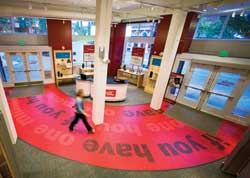
What trends in flooring are you seeing?
Oomatia: More requests for green solutions. More flooring manufacturers have created eco-friendly carpets which has expanded options. We are seeing more environmentally friendly flooring like bamboo, cork and other low Volatile Organic Compounds flooring solutions being used because of their organic sustainability and green attributes; it can be reused time and time again. Bamboo flooring costs can still reach up to $2,000-$2,500 for a 10-by-10.
Rivers: Carpet inlays, material changes, beds of pond stone, and more use of laminate or vinyl areas.
Chianese: The move to green products is giving designers more opportunity to move away from the standard carpet options. Hearing a request for something other than carpet is music to my ears.
Are you using interactive flooring?
Oomatia: Technology is starting to integrate more into flooring solutions. We have been proposing interactive flooring more often in our designs. We have not seen them widely in use yet on the show floor. They require a raised floor and can be more costly due to elaborate set ups.
Rivers: We’ve discussed its use in brainstorming sessions, but it’s a pricey item; not so much in the installation as much as the work necessary to develop the content.
Chianese: I have not had an application for interactive flooring yet, but I would like to get a chance to work with it.
Aleta Walther is a marketing communications professional and freelance writer with several years experience as a corporate exhibit manager. Contact Aleta at Aleta@prwriterpro.com. This e-mail address is protected from spambots. You need JavaScript enabled to view it.




